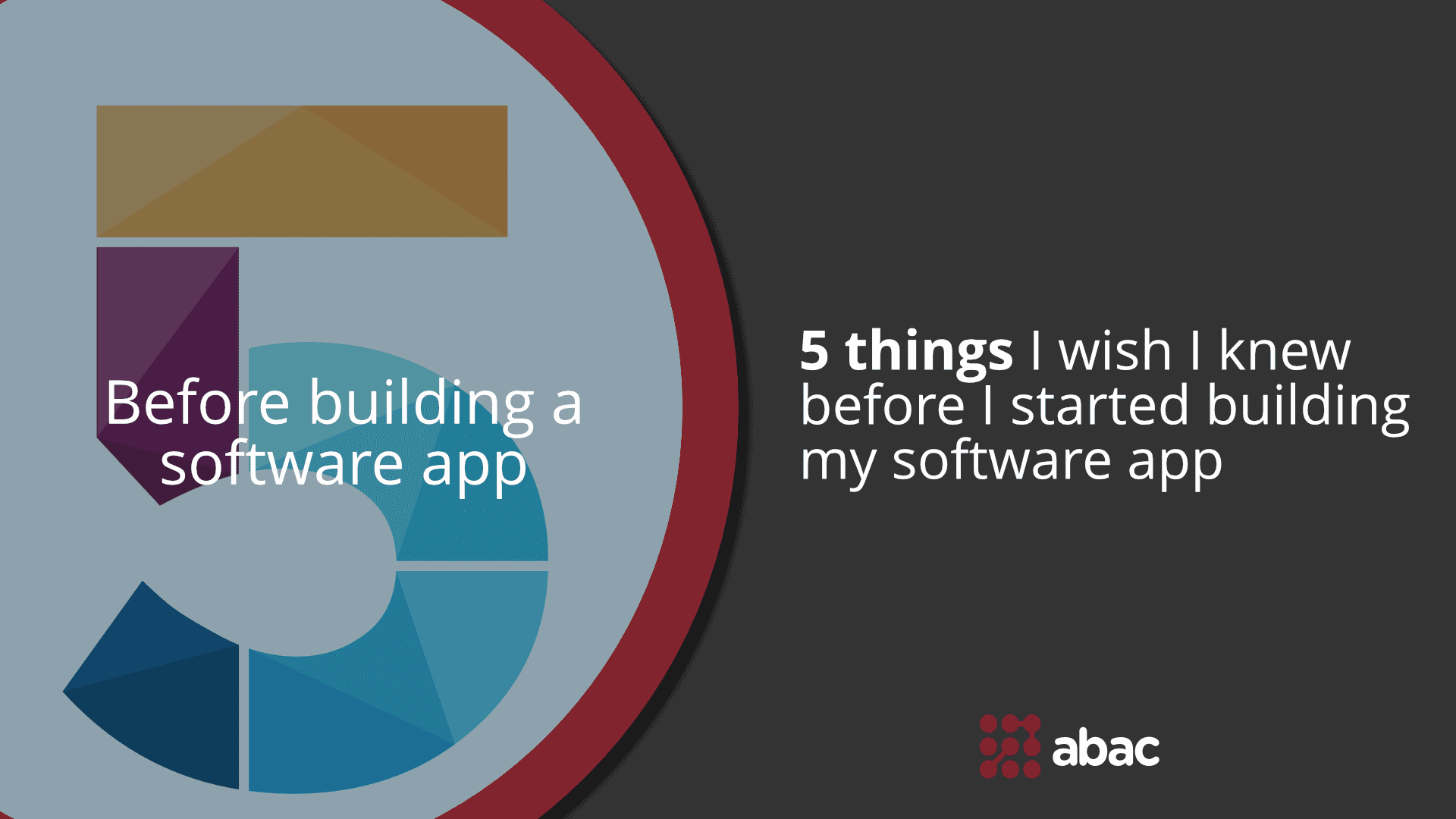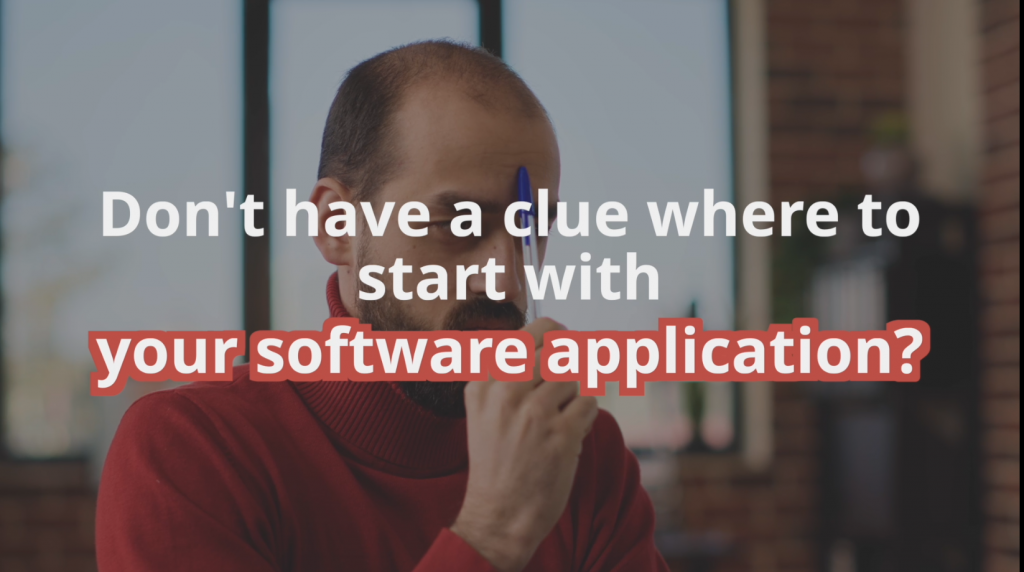Starting a business or building your dream software app can be overwhelming, especially if you’re a young entrepreneur or a startup. Managing everything from sales and marketing to accounting and operations can be challenging. And when it comes to custom application development services, it’s easy to feel lost in the technical jargon and complex coding.
As a software development company, we have worked with various startups and entrepreneurs who have had their share of ups and downs in the software development world. In this article, we’ll share some valuable insights to consider before building your dream app.
1. Know what you want to solve
When it comes to building a software app, there are a lot of things that you learn along the way. But if there’s one thing that I wish I knew before diving in headfirst, it’s to be crystal clear on the need that your app aims to cover. Trust me, it’s easy to get lost in the excitement of developing an app and forget about the problem you’re actually trying to solve.
One thing that’s super important to do is your research. If you’re building an app for a market, you need to know everything about that market. Who are your users? What problems do they have? What kind of apps do they already use? On the other hand, if you’re building an app for your own business, you need to identify the key scenarios that your app needs to address. What processes can your app automate or optimize? How can it improve communication or collaboration among your team?
By doing your research and studying your target audience, you’ll be able to create an app that truly addresses their needs and delivers value.
2. Know the value that the app will bring
When it comes to apps created for the market, there are a few key points to bear in mind.
- Before you start building, take a step back and think about your Unique Value Proposition (UVP). What makes your app different from all the others out there? How does it solve a problem in a unique and valuable way? Nail down your UVP and keep it front and center throughout the entire development process. That way, you can ensure that you’re creating an app that truly meets a need and has a clear purpose.
- Businesses often make the mistake of building an app they think users want, instead of what users actually want. To avoid this mistake, it’s essential to learn about marketing and conduct thorough market research to understand your target audience’s needs and preferences.
- Another way to see if there’s traction on the market for your product is to test an MVP first. MVP is short for Minimum Viable Product, which is a minimalist version of a software product. An MVP only offers the core functionalities needed for it to be presented on the market.
Once you have this information, you can build an application that offers a user-friendly experience.
3. Know what the app should do for each type of user
Before starting to build your app, it’s essential to think of the user scenarios that the app will facilitate to its users. This is especially important when building software for internal business process automation, as no one can know the internals of your business better than you do.
You need to consider all the different roles and responsibilities within the organization and map out how your software can improve the daily tasks. Don’t assume you know what the users need; take the time to talk to them and understand their pain points. It’s crucial to keep your end-users in mind throughout the development process and make sure that your app provides a solution to their problems.
You’ll save yourself a lot of headaches by taking this approach.
4. Know when to draw the line for what constitutes as an MVP
Since the app is built according to your vision, it is easy to get carried away by the desire for reaching “perfection” in all flows and the eagerness to design everything “future-proof”. This desire is normal, as business teaches us to always plan in advance.
Although it’s nice to think about how your app should scale to millions of users or how it should be ultra-performant, the reality is that it must first break concept before reaching a growth phase.
An MVP should be “minimalistic” in that it should offer its users the key features for validating that the app is indeed satisfying a need. Based on the feedback collected from the users, the app will have to incrementally expose new features and support new flows. This is the natural way in which applications like Facebook become… Facebook.
As a best practice, you should separate the application’s features into two lists:
- A list of crucial features, that help validate if the application will be relevant
- A list of “nice to haves”, which will be considered for development once the application proves its worth
5. Know your options
As you have your idea well structured, you would want to find a software development team or provider that will help you bring the application to life. In order to benefit from predictability in developing the app, you must fist know about the methodologies that are used for developing software applications. When it comes to custom application development, two of the most popular methodologies are Waterfall and Agile.
The Waterfall methodology is a linear approach that follows a well-defined sequence of phases, including planning, design, development, testing, and maintenance. This methodology is predictable and ideal for projects with fixed budgets and timelines. On the other hand, the Agile methodology involves breaking the project into smaller phases. It is an iterative approach with short sprints where functionality is created and released on the market in an incremental fashion. This methodology is flexible and ideal for projects with changing requirements, but it lacks the predictability in budget.
Both methodologies have their pros and cons, and the choice depends on how you decide to proceed with your application.
Our recommendation is that you build your application in a fixed price way until it reaches the MVP stage and then switch over to agile, for incremental and continuous improvements. Don’t just settle for the cheapest option; remember, you get what you pay for!
In conclusion, custom application development can be an excellent way to enhance your business operations and improve your customer experience. However, it’s important to understand your needs and goals and choose the right development team. With these tips in mind, you’ll be well on your way to developing a successful custom application for your business.
Because abac has been creating software solutions for both startups and mature enterprises, it has designed a development process that gets applications from idea to MVP in just 3 independent and logical phases.
To learn more about this, please visit abac.software/MVP.


